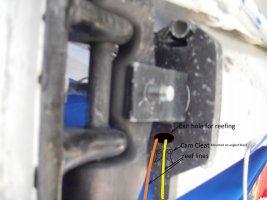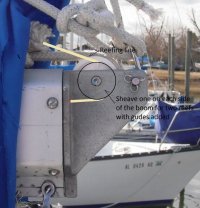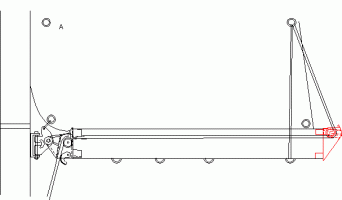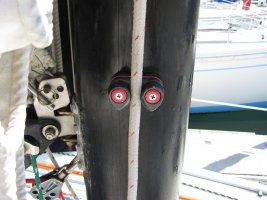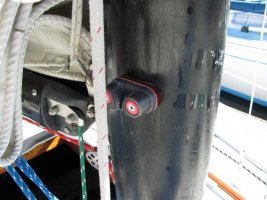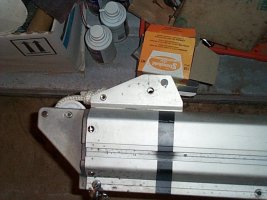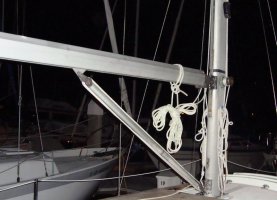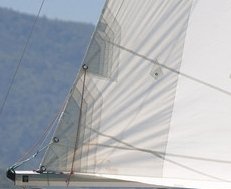Randy Rutledge
Sustaining Member
I plan to run the reefing lines internal of the boom on my E29 T. I plan to add two sheaves on the outside of the boom end in line with the outhaul and make guards for the sheaves to keep the lines on the sheaves. At the mast end I plan to have one exit hole with a cam cleat on an angled base to secure the active reef line.
The boom end reef line holes would only be 3/8” and faired to prevent chafe, the mast end hole would be oval and only large enough for the two lines.
I would like to have input on any problems this might cause or better any ideas. Pictures are attached to help convey the idea.
The boom end reef line holes would only be 3/8” and faired to prevent chafe, the mast end hole would be oval and only large enough for the two lines.
I would like to have input on any problems this might cause or better any ideas. Pictures are attached to help convey the idea.

